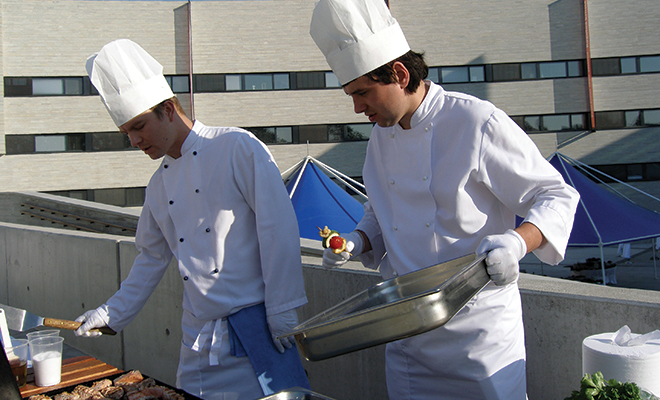
Pop-up dining
I recently had a pleasant surprise in the day’s mail: a coupon for a restaurant near our home. Their specialty? Down-home Southern fried chicken dinners with all the fixings. I order carryout dinner there about twice a year. Our guilty pleasure of comfort food is satisfied, yet our kitchen remains clean, which is a win-win. As I filed it away, I wondered, how soon will coupons in the mail be considered quaint and outdated?
A couple of years ago, this column took a look at the trend of secret supper clubs. That concept was promoted in the early 2000s, and a couple in Portland, Oregon, were credited with launching it. Michael Hebb and Naomi Pomeroy opened their home, by invitation only, to diners willing to pay a fee for a meal prepared by an up-and-coming chef. It wasn’t just about the food; there was also the component of the social interaction when people came together to enjoy something that was not available to the general public.
Secret supper clubs evolved around technology, with prospective diners sending emails to those hosting the dinners. Confirmation would be given on short notice, with no guarantees. The dinners were held in private homes, illegally, in that they were unlicensed, and no taxes were paid. This business model proved unsustainable.
One vibrant club enrollment was the WordPress website of The Ghetto Gourmet. A visit to the site today, about two years later, notes that it no longer holds events. Scroll to the bottom of the page and you’ll see why; a Health Department form states, “You are hereby ordered to cease and desist from selling food to the public.”
But this unique social dining experience was so popular that it evolved into yet another trend. If you think about the people who frequented secret supper clubs in the early 2000s, it’s likely that many of them were born before 1980. Now, young diners with disposable income were likely born before 1990. If you consider how much technology has changed between 2000 and today, it’s no surprise to learn that technology has helped supper clubs morph into pop-up dining experiences.
Today’s 20-somethings are likely to view email as archaic, and they see Facebook as something only old people enjoy. Browsing the web, I found a Twitter account for the Cleveland Dinner Club that offered links for upcoming events, with aDoodle poll for diners to choose regular, vegetarian or gluten-free entrees. Some pop-up events such as Dinner Lab, Inc., depend on patrons signing up online to receive information via email.
Who are the people most likely to be patrons of pop-up dinners? Statistics show that they are primarily women, age 18 to 34, with disposable income in the range that allows them to spend $100 or more at these events on a regular basis. More than half of them eat out at least twice a week, and nearly half report attending pop-up dining experiences at least four times a year. They also tend to be the organizers in their social circle, serving as administrators who succeed in getting others to join them in the social experience.
What are the venues being used by chefs in this social dining experience? The events have moved from pay-as-you-go dinners in homes to prepaid tickets that are a bit more commercial. Locations are often off the beaten path, in abandoned warehouses, for example. Worldwide, pop-up experiences range from ten-seat diners in Portland to beaches in England, houses in France and picnics in Canada. Music lovers can attend BYOH (bring your own headset) pop-ups that pair courses with music that enhances the meal. One can travel the world with tours such as those offered by Outstanding in the Field, where diners enjoy a sense of community with farmers, ranchers and vintners during long-table meals in settings ranging from farms and vineyards to rooftops.
How do chefs choose to establish pop-up dinners? They often have a vision, sometimes bringing together local food providers with diners to create a social farm-to-table experience. Some chefs enjoy being able to showcase the foods they are passionate about, without the stress of running a full-time restaurant. Still others use events to increase awareness for a cause. WastED New York designs a meal focused on food waste. Chef Dan Barber turns fish heads, cast-off vegetables and stale bread into memorable meals priced at $15 a plate.
One word of warning about pop-up dining: regulations. If an event has bypassed laws regarding food preparation, consumers could be at risk for food-borne illness. Chefs, patrons and local government can work together to craft reasonable regulations that ensure this dynamic, entrepreneurial experience will continue to evolve. HLM
Sources: dinnerlab.com, doodle.com, fodors.com,hourdetroit.com, kernelmag.dailydot.com, lawreview.uchicago.edu, outstandinginthefield.com, theghet.com and wastedny.com.







